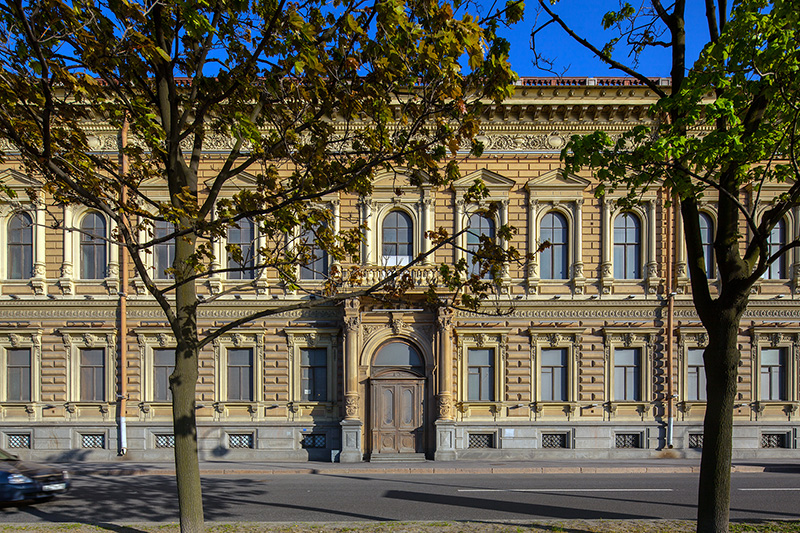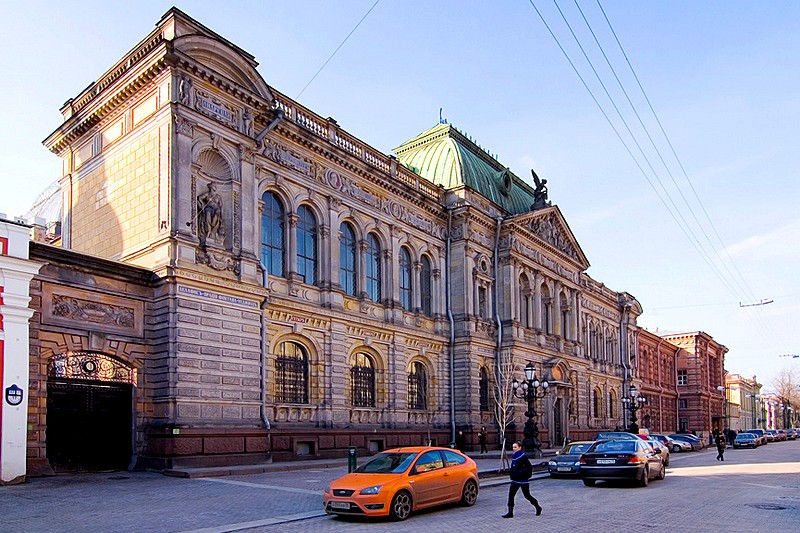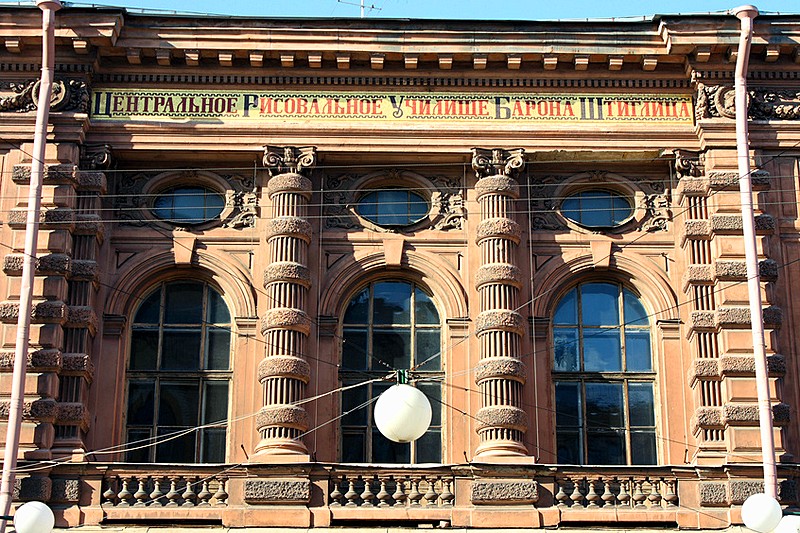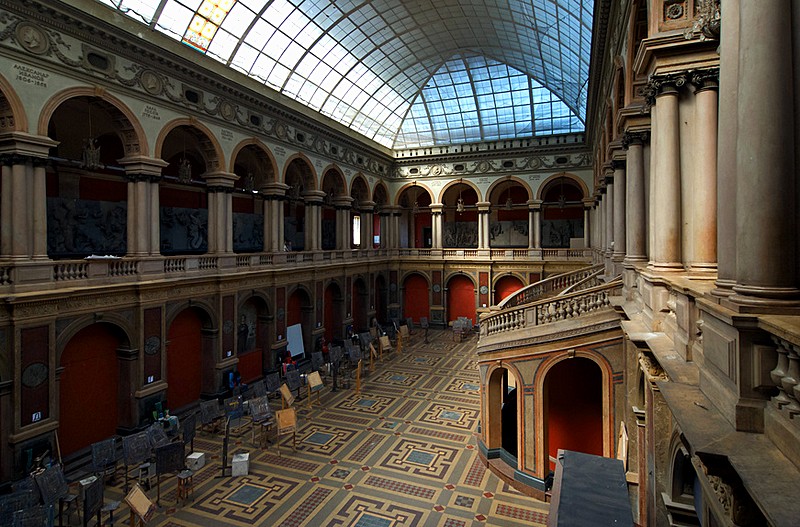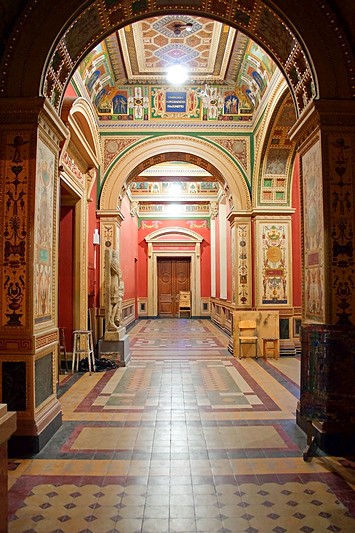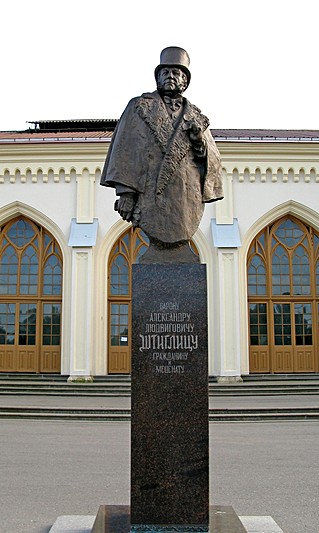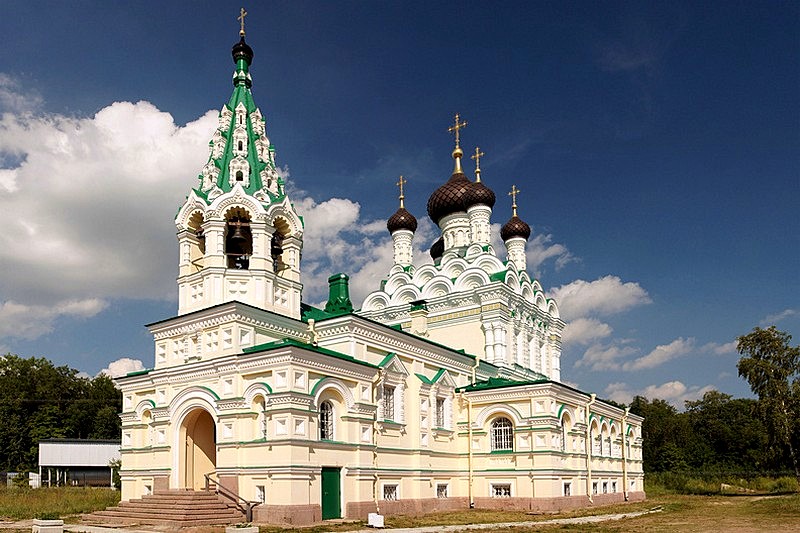Alexander von Stieglitz
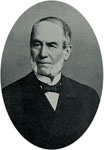
Banker, industrialist, philanthropist
Born: St. Petersburg - 1 September 1814
Died: St. Petersburg - 24 October 1884
Alexander von Stieglitz was born in St. Petersburg in 1814, shortly after his father had adopted the Lutheran religion to help assimilate in Russian society. Von Stieglitz was educated at the University of Dorpat (now Tartu in Estonia), and in 1840 began service in the Ministry of Finance. On the death of his father in 1843, he took control of Stieglitz and Co. Working for the government, he organized loans from abroad to fund the construction of the Nikolaevskaya Railroad (from St. Petersburg to Moscow) and the Crimean War (1853-1856). In 1846 he was elected chairman of the Exchange Committee by St. Petersburg's merchants, a post he held for 13 years.
Stieglitz's industrial holdings included a paper factory in Ekaterinhof and textile factories in the city of Narva. He was also a partner in the construction of the Peterhof Railroad (from St. Petersburg to Peterhof) and the Baltic Railroad (from Gatchina to Luga). He then became a founding member of the Main Society of Russian Railroads, which began to lay tracks across the country.
Stieglitz liquidated his private banking business in 1860 in order to take control of the newly established State Bank of the Russian Empire, of which he was appointed the first governor. He left the post in 1886, and dedicated the rest of his life to his philanthropic works. In 1881 he was made a Privy Councillor in Deed, practically the highest civil rank in the Russian Empire.
Stieglitz's charitable works included generous endowments of insurance funds for the staff at his own bank and the State Bank and donations to various educational establishments and public projects. Most significant, however, was the founding of the Central College of Technical Drawing (now the A. L. Stieglitz St. Petersburg State Industrial Art Academy), for the construction of which he donated one million rubles in 1876. A further seven million rubles left to the college in his will allowed for the establishment and rich endowment of the Stieglitz Museum of Applied Art, as well as funding the college for several decades. Known as the Mukhina College (after sculptor Vera Mukhina) in the second half of the 20th century, it remains one of Russia's most respected art colleges.
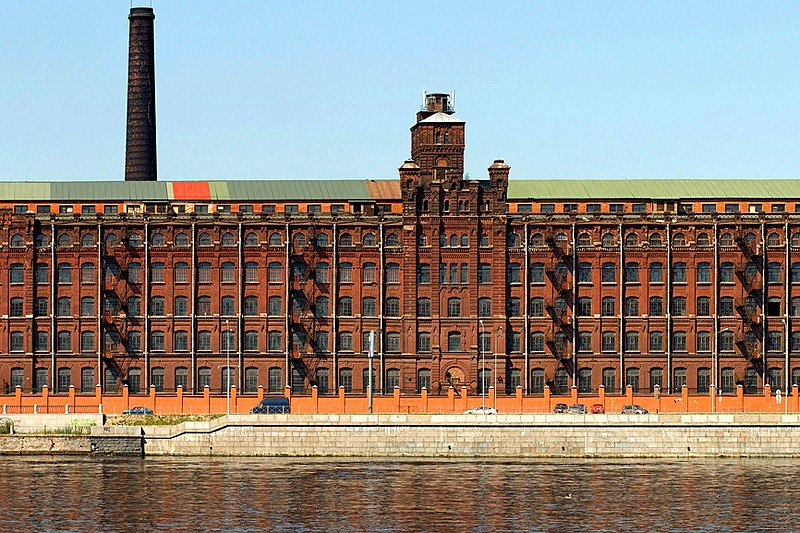
Stieglitz died in October 1884, and was buried in Ivangorod at the Church of the Holy Trinity, which he himself had constructed for the use of local factory workers. Although Stieglitz's only son died in childhood, he and his wife Carolina adopted the illegitimate daughter of Grand Duke Mikhail Pavlovich, youngest brother of Alexander I and Nicholas I. Named Nadezhda Mikhailovna Yuneva (supposedly because as a newborn baby she was found in basket in the garden of the Stieglitz dacha in the month of June), she would inherit the largest part of Stieglitz's fortune, which amounted to over 38 million rubles, not including property, at the time of his death.
Monuments: Monument to A. L. Stieglitz at Novy Peterhof Railway Station, Monument to A. L. Stieglitz at the State Industrial Art Academy
Addresses: Baron Stieglitz Mansion (68, Angliyskaya Naberezhnaya), Stieglitz Museum of Applied Art, A. L. Stieglitz St. Petersburg State Industrial Art Academy
Connected with: Ludwig Stieglitz

